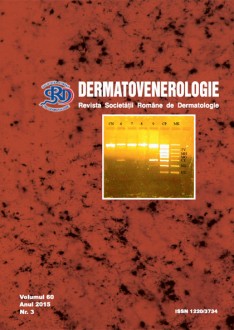Introduction. Toxic epidermal necrolysis (TEN) is a rare and potentially fatal disease and is clinically characterized by extensive erythematous eruption subsequently vesiculobullous that leads to epidermic detachment of the skin and mucous membranes, affecting more than 30% of the body surface.
Case report. We present a 47 year-old woman, nonsmoking, who was hospitalized for an extensive erythematous eruption, flaccid blisters with serocitrin content which lead to severe detachment of the epidermis; painful erosions in the mouth, genital and perianal area; bilateral conjunctivitis, fever and chills. Symptoms started 4 days before admission, 21 days after the onset of the treatment with sulfasalazine 2 g / day. Corroborating clinical aspects (body surface area affected over 30%) with other investigations she was diagnosed with toxic epidermal necrolysis induced by the administration of sulfasalazine.
Discussion. The pathogenesis is incompletely elucidated. TEN is believed to be an immune-related cytotoxic reaction aimed at destroying keratinocytes that express a foreign antigen. The widespread epidermal injury is thought to be a consequence of keratinocyte apoptosis.
The mechanism that sulfasalazine can induce adverse reactions is toxic or immunoallergic.
Conclusions. Although rarely reported, sulfasalazine can induce toxic epidermal necrolysis. Due to increased risk of relapse the administration of drugs commonly involved in the pathogenesis of NET is completely forbidden.


